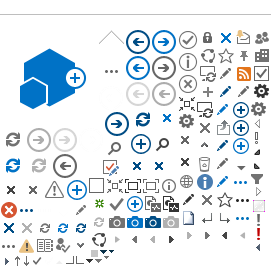Technical Session 16: Yeast III Session
Martin Zarnkow, TU München
Co-author(s): Thomas Becker, TU München, Germany
ABSTRACT: The goal of this study was to find a normative
parameter for the growth of lactic acid bacteria in barley malt wort,
probiotic or not. Four bacteria (Lactobacillus brevis, L. casei, L. perolens, and Leuconostoc lactis) and five well-established probiotic bacteria of the food industry (L. rhamnosus, L. acidophilus, L. casei, Streptococcus thermophilus, and Bifidobacterium lactis)
were selected. Out of three different initial cell counts, three
different pH values, and three different incubation temperatures, the
most appropriate parameter set to the growth should be found. With this
set, a general statement should be made, which can be accepted for a
multitude of probiotic lactic acid bacteria in barley malt wort as
substrate. The pH value, absorbance at 600 nm, and percentage amount of
lactate were measured daily for this experiment. At the first and last
day of this test run, the concentration of the extract and the alcohol
concentration were determined. The face centered design of response
surface methodology and the analysis resulted from the software Stat
Ease Design Expert. The absolute growth, difference in absorbance
between the end and beginning of the experiment, pH value, and amount of
lactate at the end of the experiment were analyzed. In four out of five
tested strains, the pH value of the substrate had the highest impact on
growth. A pH value of 5.6 caused maximum growth behavior of these
strains, although the amplitude was quite different. The determined
growth ranged between a doubled and a 25-fold growth. In four out of
five strains, the percentage amount of lactate was dependent on the pH
value of the substrate as well. The highest amount of lactate was
produced between a pH value of 4.8 and 5.6. The averaged amount of
lactate was between 0.07 and 0.38%. The decline in pH was conspicuous
for all of the strains. Predominately, a pH value below 4.0 was reached
at the end of the experiment. The consumption of the extract was very
different. Between 0.21 to 6.12% of the extract was fermented by the
end. Because of the differing results, a normative procedure for these
lactic acid bacteria is not easy to determine. Thus, a compromise has to
be made that is close to the optimum but that cannot be the optimum for
all probiotic and non-probiotic strains.
Martin Zarnkow
apprenticed as a brewer and maltster from 1989 to 1991 at a small
brewery in Frankonia. Finished a Diplom-Ingenieur (FH) degree, option
brewing technology, in 1996 at TU München, Weihenstephan. Worked as a
brewmaster for one year in a medium-sized brewery in Germany. Since 1997
Martin has been head of the research group for brewing and beverage
technologies and microbiology at the Lehrstuhl für Brau-und
Getränketechnologie (Institute for Beer and Beverage Technology) at TU
München in Weihenstephan. Finished his external Ph.D. research in 2010
at the University College of Cork, Ireland, on the subject “Proso Millet
(Panicum miliaceum L.) a Sustainable Raw Material for the Malting and Brewing Process.”
VIEW PRESENTATION 56
